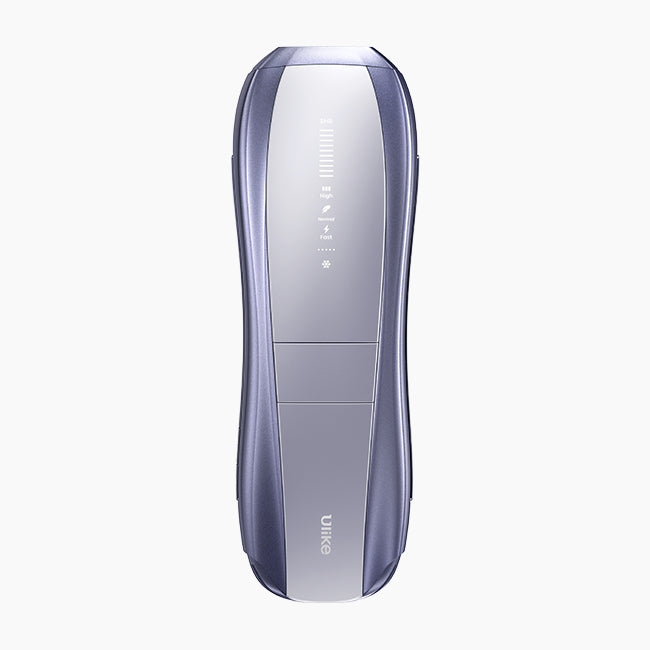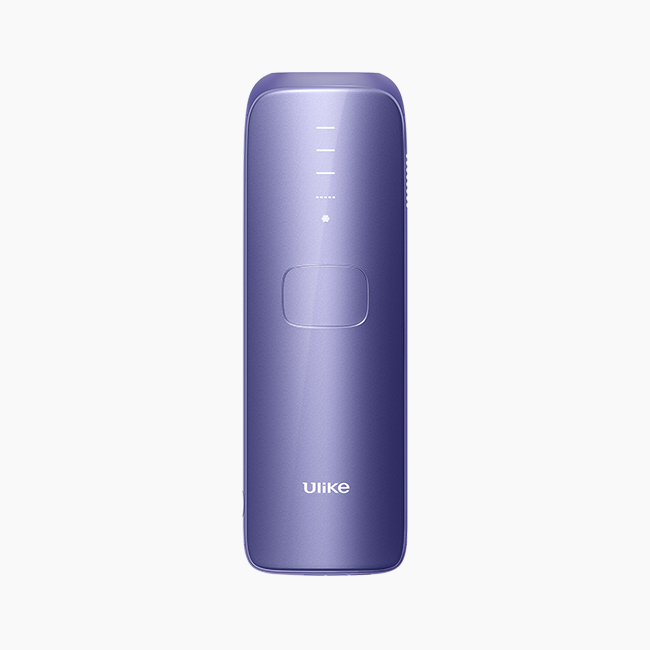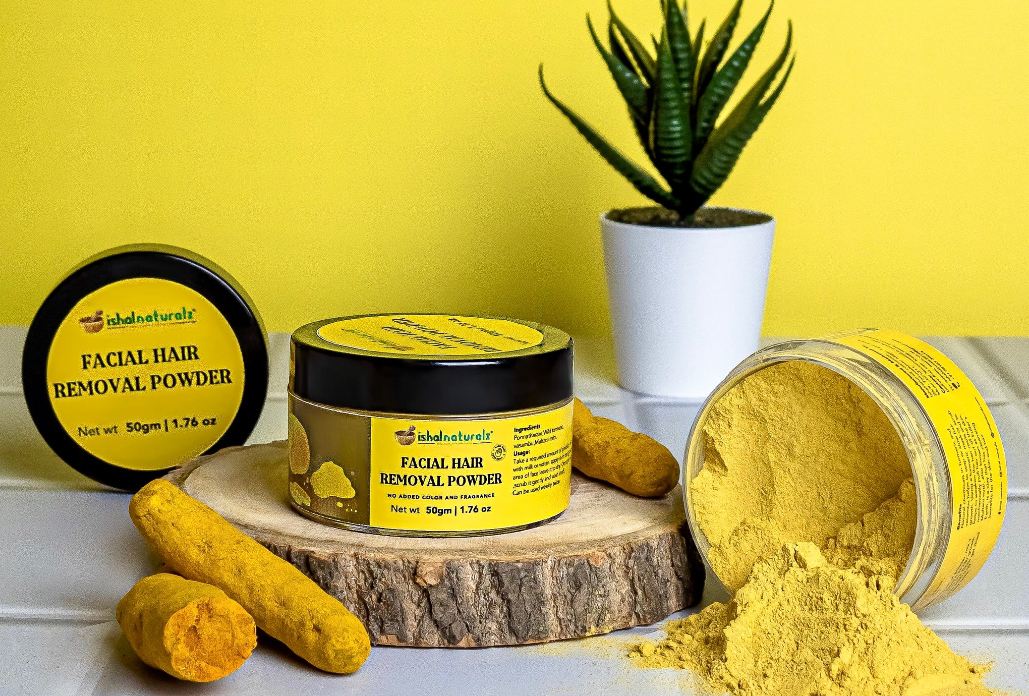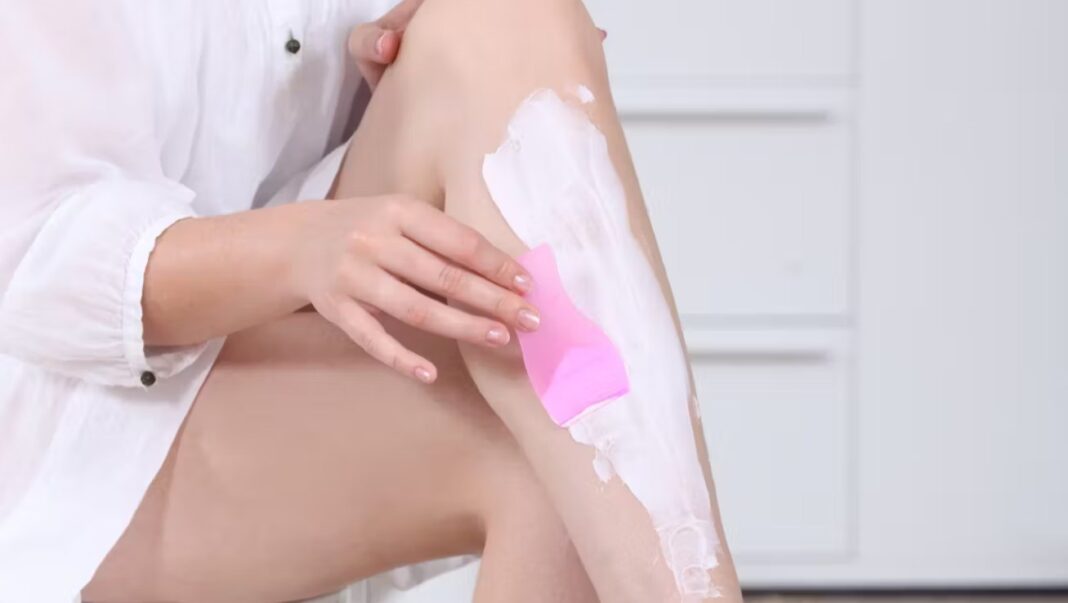
Hair removal using depilatory creams is widely used for its quick and nearly painless treatment. Since these creams dissolve the hair, so they provide you with a smooth finish. They are cost-effective, easy to use for beginners, and easily accessible for everyone. So why should we not love using them for our last-minute hair removal sessions, right?
But, have you ever wondered how these creams dissolve your hair? They use chemicals for this purpose. Can these chemicals burn your skin? How damaging are these harsh products for your skin? What to do if the depilatory creams burn any area of the body? Let’s find the answer!
Table of Contents:
- Part 1: Can Hair Removal Creams Cause Chemical Burns?
- Part 2: How to Treat Chemical Burns from Hair Removal Creams?
- Part 3: How to Prevent Chemical Burns Caused by Hair Removal Creams
- Part 4: A Safer Alternative: IPL Hair Removal
Can Hair Removal Creams Cause Chemical Burns?
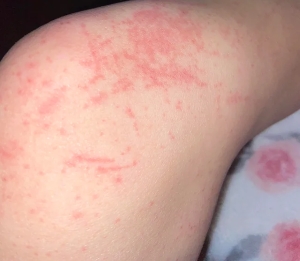 Depilatory creams contain certain chemicals like thioglycolate that target the keratin in your hair structure. In addition, NaOH or CaOH supplements the activity of thioglycolate by changing the pH of the medium. They break the disulfide bonds of hair thus melting them. So, as we move the spatula against our body, it removes our hair.
Depilatory creams contain certain chemicals like thioglycolate that target the keratin in your hair structure. In addition, NaOH or CaOH supplements the activity of thioglycolate by changing the pH of the medium. They break the disulfide bonds of hair thus melting them. So, as we move the spatula against our body, it removes our hair.
Similar to hair structure, our epidermis also has some disulfide bonds. This means that the depilatory creams can affect the skin as well. When applied for longer than usual or any carelessness during application can lead to skin burns. Moreover, the risk of burn increases if you are using the depilatory creams on sensitive areas like the groin region or underarms. Most patients present with partial-thickness chemical burns.
Also read: Can Hair Removal Creams Cause Cancer?
How to Treat Chemical Burns from Hair Removal Creams?
Before treating burns at home, it is essential to know that all the treatment you are doing at home is preferred for mild to moderate-degree burns. If the burn is severe, you need to consult a professional immediately. They can prescribe you a better treatment according to the affected area and the degree of burn.
Rinse the Area Immediately
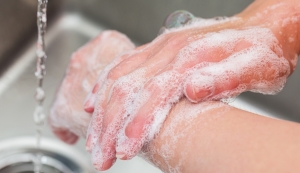 To treat a chemical burn, the first step is to immediately rinse the area with slightly cold water. Irritating the area with a supple amount of water can dilute the chemical and flush it off completely from the surface of your skin. This prevents any further damage to the skin.
To treat a chemical burn, the first step is to immediately rinse the area with slightly cold water. Irritating the area with a supple amount of water can dilute the chemical and flush it off completely from the surface of your skin. This prevents any further damage to the skin.
While irrigation, ensure that you are not using any soap or other cleansing products. These can react with the chemical and worsen the situation. So, let the water flow gently on the burned area and then pat dry the area using a soft cloth. Rubbing during irrigation or drying the water from the skin’s surface can erode it.
Use Ice
Burning of the skin by depilatory creams causes redness, burning sensation, irritation, pain, and sometimes numbness on the skin. To soothe the burning sensation, you can use ice. Ice when applied to the burnt area, reduces the inflammation. It reduces the blood flow to the affected area and reduces the activity of nerves temporarily. So, your pain will be relieved for a short ti,e interval.
However, applying ice directly to the damaged area is not recommended. It is better to wrap the ice to prevent direct contact of ice with the skin.
Aloe Vera can be Helpful
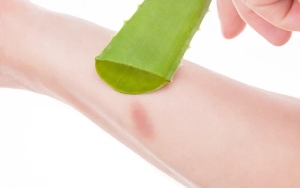 For the treatment of mild chemical burns aloe vera gel can also be used. You can directly use the gel freshly extracted from aloe vera leaf or the gel available in the market. Before buying, ensure that the gel is pure and not mixed with any other harsh chemical ingredients.
For the treatment of mild chemical burns aloe vera gel can also be used. You can directly use the gel freshly extracted from aloe vera leaf or the gel available in the market. Before buying, ensure that the gel is pure and not mixed with any other harsh chemical ingredients.
Aloe vera is an antibacterial hydrating agent that can reduce skin inflammation and increase the activity of the immune system. This accelerates the healing of wounds and soothes the skin till you get a proper treatment for the burn.
Use Hydrocortisone Cream and Antibiotics
A hydrocortisone cream is a topical steroid that can be applied to the skin to reduce inflammation. It also minimizes the itchiness and discomfort on the skin. The over-the-counter creams are commonly available in general stores or pharmacies. You can buy them without a doctor’s prescription.
Other than hydrocortisone cream, it is advised to use an antibiotic for the burn as well. It is because, after a chemical burn the skin becomes more sensitive to microbial attack. So, antibiotics can serve as a prophylactic treatment measure.
Keep the Area Moisturized
To increase the efficacy of any treatment you are undergoing for a chemical burn, moisturize the area regularly. Sufficient skin hydration throughout wound healing can help speed up the recovery process.
It also prevents the formation of bad scars that can leave long-lasting marks on the skin. The moisturizer must not have any harsh products and it should be lightweight.
Give it Time
Chemical burns do not heal immediately. They need time of at least a few days. Mild burns take a few days while moderate to severe burns can take weeks to months for complete healing. You need to be patient during this time and take proper care of the burnt area.
For instance, avoid wearing tight clothes during this time as the clothes can rub against the skin and irritate it. Also, refrain from continuously touching the wound as it can infect the area. Keeping the area clean is essential because there are hundreds of microbes in the environment waiting to attack our bodies and cause infection.
How to Prevent Chemical Burns Caused by Hair Removal Creams
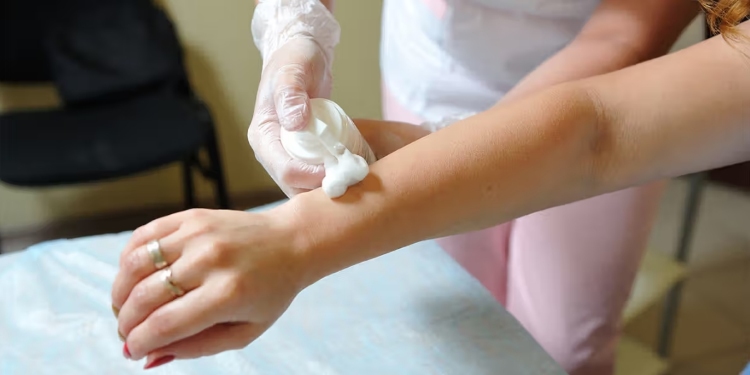 A few simple steps can help prevent the burns caused by depilatory creams. Let; ‘s see what those steps are.
A few simple steps can help prevent the burns caused by depilatory creams. Let; ‘s see what those steps are.
Follow the Instructions Exactly
Every depilatory cream has different instructions depending upon its formulation. Read those instructions before starting the hair removal. Most brands recommend using the cream for 3 months for smaller and thin hair while a maximum of 10 minutes is enough for rough and coarser hair.
Rinse off the cream with a spatula immediately after the recommended time. Increasing time can increase the risk of burning the skin.
Do a Patch Test
The thickness of skin in different areas of our body varies. For example, some areas like the eyelids, underarms, and genitals have thinner skin as compared to other body parts. This makes these particular areas more sensitive and prone to damage.
Therefore, it is essential to conduct a patch test when using a depilatory cream, especially in these areas. You can try it on your leg or hand to make a rough estimation of the efficiency of the cream. Then you can apply it on the sensitive areas and adjust the time of application accordingly.
Avoid Using Extra Amounts of Hair Removal Cream
It is common for people to think that using a larger amount of cream can speed up the hair removal process. But this is wrong as using a larger amount of cream will affect the skin and cause a chemical burn.
Then how much depilatory cream should I use? To nail the art of hair removal using a depilatory cream, learn to spread a consistent thin layer of cream on the body. A quarter-sized amount of cream is enough for one area. Then wash off any excess cream from your hands. To test whether the hair is ready to be removed, use the spatula to remove cream from one region. If hair comes off easily then remove the cream immediately. Rinse the area thoroughly to ensure no cream is left on the skin.
A Safer Alternative: IPL Hair Removal
There are times when all the precautions go in vain because your skin is too sensitive to tolerate the chemicals present in a depilatory cream. If you are one of such cases, we recommend you try IPL hair removal.
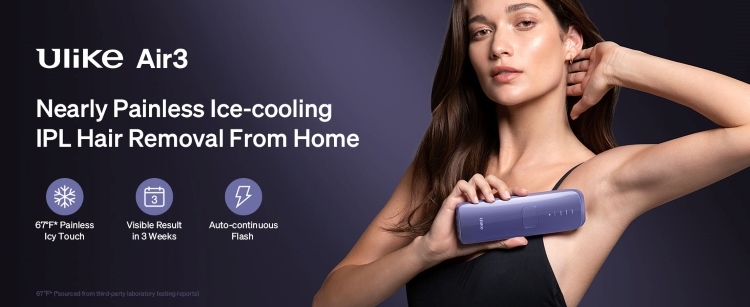 IPL hair removal technique is based on the principle of selective photothermolysis in which heat breaks down the targeted cells on the skin. For hair removal, these targeted cells are the hair follicles responsible for hair growth. Hence, the destruction of hair follicles can give you months of smooth skin with no worries about hair growth.
IPL hair removal technique is based on the principle of selective photothermolysis in which heat breaks down the targeted cells on the skin. For hair removal, these targeted cells are the hair follicles responsible for hair growth. Hence, the destruction of hair follicles can give you months of smooth skin with no worries about hair growth.
With a vast variety of at-home IPL devices available, you can give a try to Ulike Sapphire Air 3. It is an FDA-cleared product suitable for all skin types and every area of your body. Its four-fold ice-colling technology makes treatment nearly painless while the incorporated UV filters make it safe to use. You can achieve a 90% reduction in unwanted body hair within a week. Moreover, you can also customize its settings depending on your skin sensitivity.
Conclusion
Depilatory creams contain chemical products that dissolve the hair and make hair removal a breeze for us. However, these chemicals can break our epidermis as well causing irritation, inflammation, and ultimately chemical burns. To treat these burns, the first step is to thoroughly rinse the area with water and then apply a hydrocortisone cream to reduce inflammation.
To aid wound healing, pure aloe vera gel and a gentle moisturizer can help. However, if chemical burns occur continuously it is best to replace your hair removal methods. IPL can serve as an effective alternative as the technique removes all hair as quickly as depilatory creams and has minimum chances of burning your beautiful skin.
